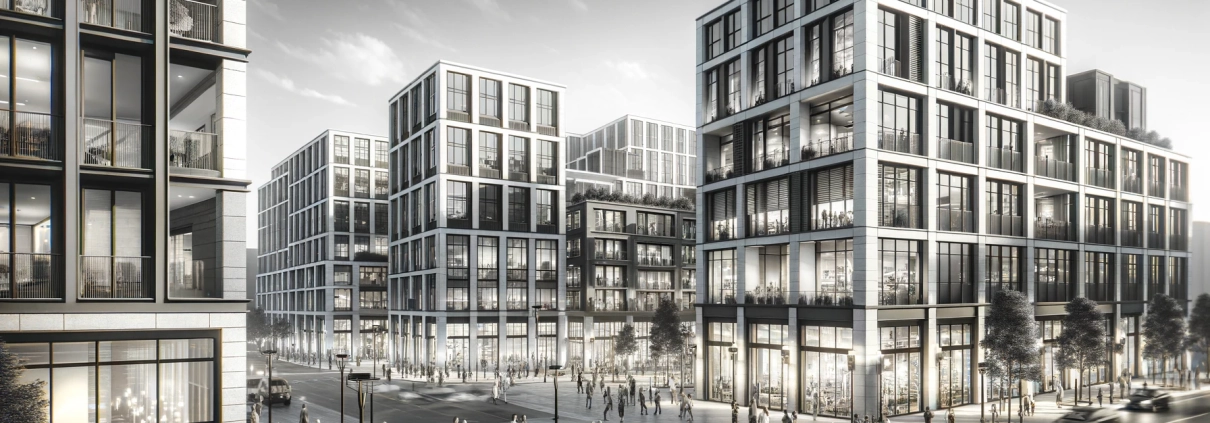Tax Increment Financing
A fiscal tool employed by municipal governments to foster urban renewal and development in designated areas. In a TIF district, the tax revenue generated by any increase in property values above a predetermined baseline is diverted into a TIF fund. This fund is utilized primarily for public infrastructure enhancements and job creation initiatives within the district, thereby catalyzing further increases in property values and attracting additional private investment.
From the perspective of a real estate developer, Tax Increment Financing (TIF) represents a strategic financing mechanism that reduces the initial financial burden of developing underutilized or distressed properties. By capitalizing on the future tax revenues generated by enhanced property values within a TIF district, developers can secure upfront funding or subsidies for critical infrastructure improvements, thus mitigating risk and enhancing the overall feasibility of their projects.
Putting ‘Tax Increment Financing’ in Context
Downtown Revival Plaza, Pittsburgh
Urban Renewal Developers, Inc. has embarked on an ambitious project to transform a dilapidated block in Pittsburgh’s historic downtown into a vibrant mixed-use development, named Downtown Revival Plaza. This project spans across 5 acres, incorporating 200,000 square feet of retail space, 300 residential units, and 100,000 square feet of office space.
The Role of Tax Increment Financing (TIF)
To make this development viable, Urban Renewal Developers, Inc. utilized Tax Increment Financing (TIF) as a key element of their funding strategy. The City of Pittsburgh established a TIF district that includes the project’s location, recognizing the potential for significant economic and social benefits.
- Pre-Development Scenario: Before development, the annual property tax generated by the old buildings on the block was approximately $100,000. This amount serves as the baseline for the TIF agreement.
- Post-Development Projections: Post-development, the expected annual property tax is estimated to rise to $500,000 due to increased property values from the new construction and improvements. The incremental tax revenue, which is $400,000 ($500,000 minus the $100,000 baseline), will be allocated to a TIF fund annually for a specified period (commonly 20-25 years).
Utilization of TIF Funds: These TIF funds are designated for further public infrastructure improvements around Downtown Revival Plaza, such as enhancing roadways, upgrading utilities, and beautifying public spaces, which are crucial for supporting the new development and attracting more private investments.
Impact on the Community
The project is anticipated to create 500 new jobs and will offer affordable housing options within 20% of the residential units. The development not only aims to rejuvenate the area but also to stimulate economic growth and improve the quality of life for the community.
This scenario is hypothetical and serves to illustrate how Tax Increment Financing (TIF) can be strategically used to support significant urban development projects.
Frequently Asked Questions about Tax Increment Financing (TIF)
What is Tax Increment Financing (TIF)?
TIF is a fiscal tool used by municipalities to encourage urban development. It redirects the increased property tax revenue—above a set baseline—into a fund used for public infrastructure improvements within a designated district.
How does TIF benefit real estate developers?
TIF helps reduce the upfront financial burden of developing distressed properties by enabling developers to leverage future property tax increases to fund critical infrastructure improvements, thus mitigating project risk.
How was TIF applied in the Downtown Revival Plaza project?
The City of Pittsburgh created a TIF district including Downtown Revival Plaza. Pre-development tax revenue was $100,000; post-development projections rose to $500,000. The $400,000 increment is redirected annually to a TIF fund to support surrounding infrastructure.
What types of improvements are funded through a TIF?
TIF funds are typically used for public infrastructure projects such as road enhancements, utility upgrades, public space beautification, and other improvements that support new development.
What is the typical duration of a TIF agreement?
A TIF agreement usually spans 20 to 25 years, during which the incremental property tax revenue is diverted to the TIF fund instead of going to general municipal revenue.
What is the baseline in a TIF district?
The baseline is the amount of property tax revenue generated before development. Only the increase (increment) above this baseline is allocated to the TIF fund.
How does TIF impact local communities?
TIF can catalyze economic growth, create jobs, and improve infrastructure in underutilized areas. In the Downtown Revival Plaza example, the project is expected to generate 500 jobs and offer affordable housing within 20% of the residential units.
Click here to get this CRE Glossary in an eBook (PDF) format.

